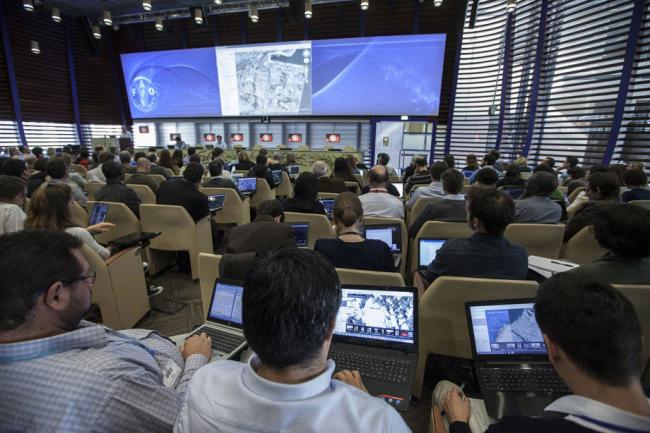
UN agency and Google collaborate on satellite data tools to manage natural resources
Under the collaboration, the UN agency said that resource managers and researchers in many countries can gauge changing land uses of individual field-sized plots seen by “eye-in-the-sky” satellites, thereby improving abilities to assess a landscape’s carbon storage capacity or plan a nation’s approach to greenhouse gas emissions.
The agency and Google are “ushering in an unprecedented level of environmental literacy,” said FAO Director-General José Graziano da Silva in a press release.
The initial focus of the collaboration is in the forestry sector, where FAO said that national experts can, after a short training, use its software and Google’s accessible geospatial data archives to conduct – in a few hours – mapping and classification exercises that used to take weeks or months.
For example, easily accessible and rapidly updated remote sensing data enable a shift in forest management from inventory reports to taking the almost real-time pulse of forests, thus opening a host of new policy prospects and further opening the doors of scientific perception, the agency said.
FAO stressed that opportunities for future collaboration are “vast,” and may lead to innovation in a range of issues from dietary nutrition and pest control to water management and climate change.
“The more people involved, the better it works,” said Graziano da Silva. “Understanding the effects of climate change, planning the improvements in the efficiency of production and distribution of food, and monitoring progress towards the Sustainable Development Goals require more frequent and precise data on the environment and its changes,” he added.
Using technology to change future generations
FAO said that the combination – in which Google makes data and processing power easily accessible while FAO devises ways to extract useful information – has already moved into innovative territory, notably with a Global Dryland Assessment, in which national experts, university researchers, partner institutions and FAO combined forces in an open-sourced exercise. Results will be published later this year.
“Partnerships like this bring our products into actual use,” said Rebecca Moore, Director of Google Earth, Earth Engine and Earth Outreach.
The partnership with FAO is a way “we can each bring our unique strengths to make a change for future generations,” she said.
FAO’s Locust Control Unit has used Earth Engine to improve forecasts and control of desert locust outbreaks. Satellites cannot detect the dreaded insects themselves, but can accelerate identification of potential breeding areas and make ground interventions more effective.
Other prospective applications for the technology may reduce crop losses yields and enhance plant health. Forest cover monitoring has proven useful in Costa Rica, as trees provide habitat for birds that predate on the coffee berry borer beetle, which can ravage up to 75 per cent of a coffee farmer’s crop.
Further innovative uses will emerge as more people learn how to use FAO’s Open Foris and CollectEarth tools. In late May, a team from NASA, the United States’ National Aeronautics and Space Administration, will be visiting Rome to study how to use these tools, FAO said.
Seeing both the forest and the trees
Satellite imagery cannot replace the local knowledge and expertise – often dubbed “ground truth” – but it can boost the efficiency, quality, transparency, credibility and, above all, the timeliness and efficacy of data collection and the validation of existing global mapping products.
For example, by zooming in to highly granular local plots, researchers and officials may distinguish between temporary loss of tree cover due to harvesting and deforestation driven by land use change, an important technical difference in terms of carbon sequestration. By the same token, citizens may be able to make more efficient use of their natural resources and even police their misuse.
“We will be able to provide, every 10 days, forest assessments and in the near future food crop cover assessments, which are especially important in times of climate change,” said René Castro, FAO’s Assistant Director General for Forestry.
This past December, FAO and Google Maps agreed to work together, under a three-year partnership, to make geospatial tracking and mapping products more accessible, providing a high-technology assist to countries tackling climate change and much greater capacity to experts developing forest and land-use policies.
Photo: FAO/Giulio Napolitano
Support Our Journalism
We cannot do without you.. your contribution supports unbiased journalism
IBNS is not driven by any ism- not wokeism, not racism, not skewed secularism, not hyper right-wing or left liberal ideals, nor by any hardline religious beliefs or hyper nationalism. We want to serve you good old objective news, as they are. We do not judge or preach. We let people decide for themselves. We only try to present factual and well-sourced news.







